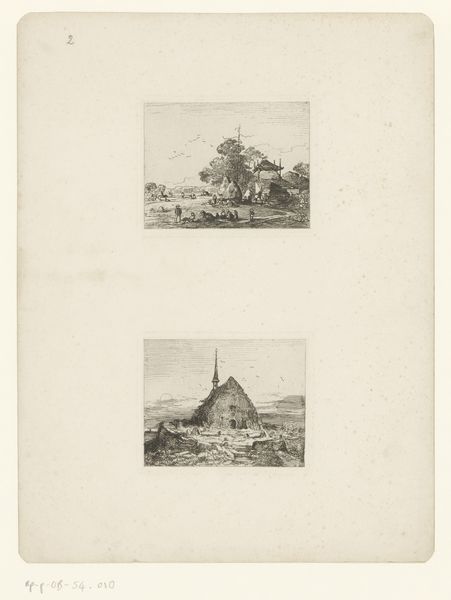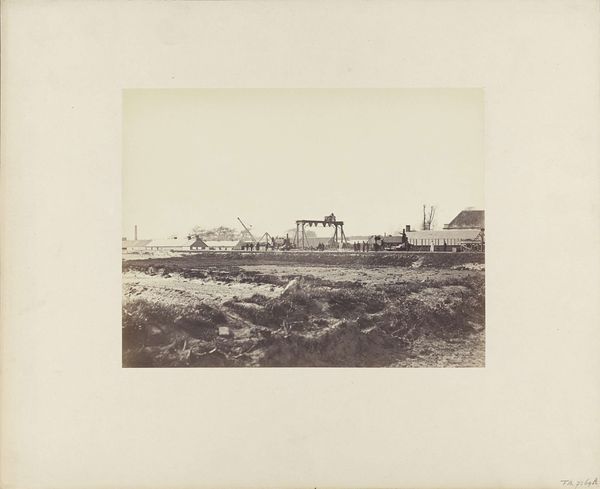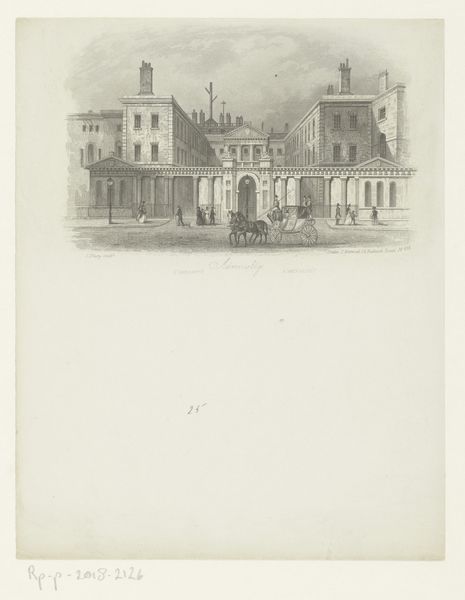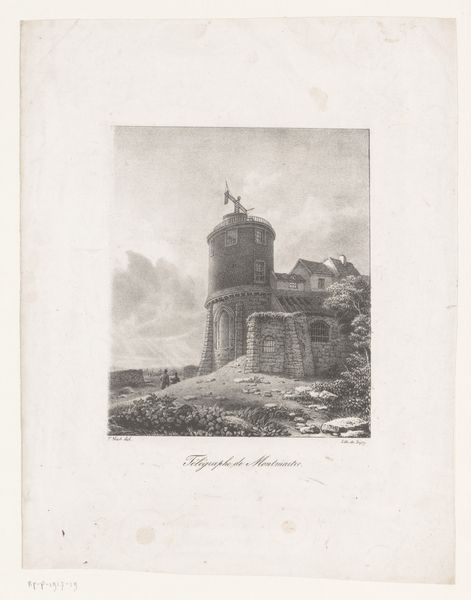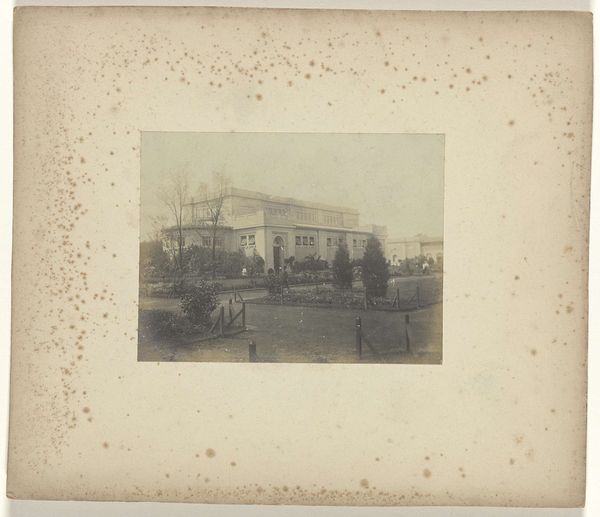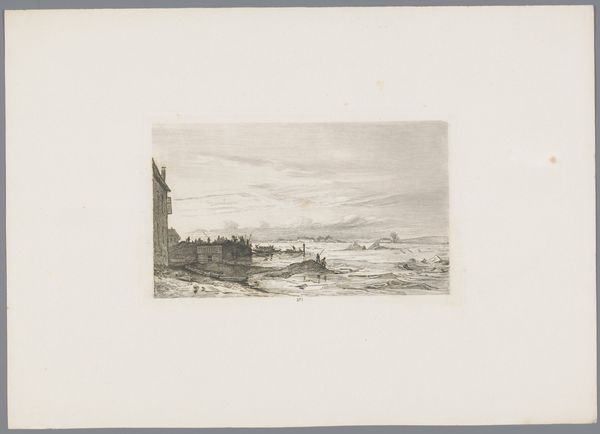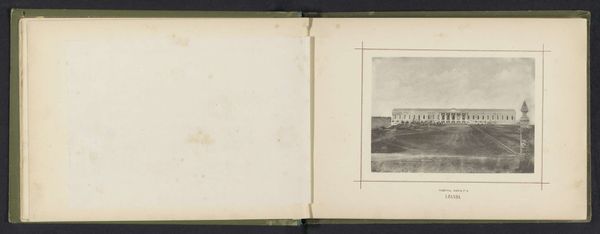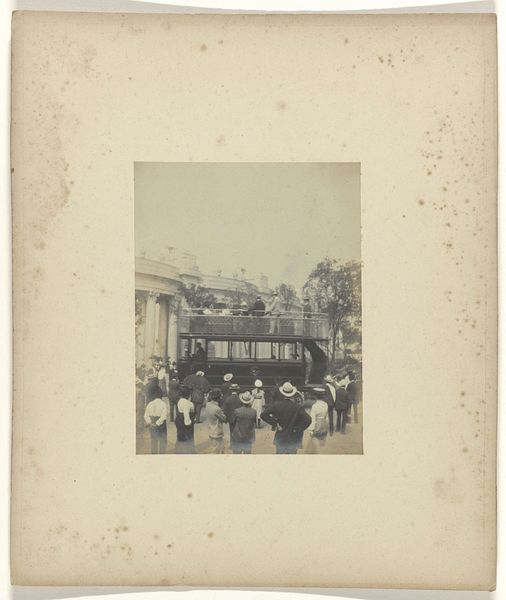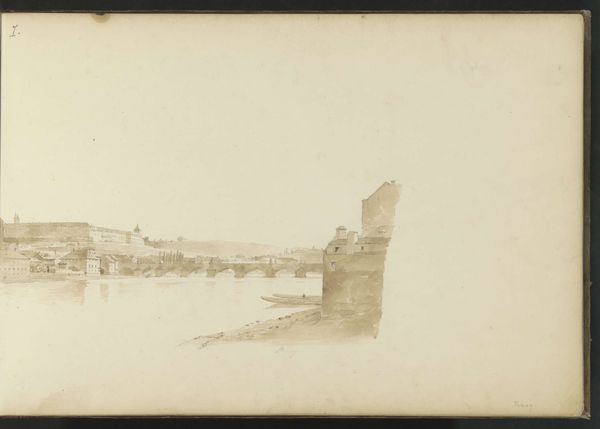
Gezicht op de Festival Hall en het drooggelegde Grand Basin (of: Lagoon) op het terrein van de wereldtentoonstelling in St. Louis (Louisiana Purchase Exposition), 1904 1904
0:00
0:00
print, photography
# print
#
photography
#
photojournalism
#
cityscape
#
modernism
#
realism
Dimensions: height 105 mm, width 82 mm
Copyright: Rijks Museum: Open Domain
Curator: Looking at this print, the "View of the Festival Hall and the drained Grand Basin (or: Lagoon) on the grounds of the World's Fair in St. Louis (Louisiana Purchase Exposition), 1904," I immediately think about labor. You see this magnificent hall, but where are the workers who erected this? What about those who dismantled it just as quickly afterward? Editor: There's a certain melancholy to it, isn't there? The almost monochromatic palette contributes to a sense of looking back at a vanished moment. The photograph offers a haunting view of a monument meant to stand for progress and connection between Louisiana and other States in a global context. It captures a time of intense change and expansion, marred by deep inequalities. Curator: Absolutely. Think about the sheer industrial undertaking the fair represented, both in terms of building it and dismantling it after its brief lifespan. That lagoon didn't empty itself! Also, the exploitation required for the material acquisition is implicit but must be addressed. The materials for all the buildings at the Fair would have involved global supply chains that undoubtedly relied on labor exploitation. Editor: I wonder about the choice to depict the Grand Basin drained, a deliberate artistic one, surely. It gives this otherwise grand spectacle an almost ghostly quality, like a stage set between performances, or a symbol of what’s been extracted to achieve it. Curator: A telling metaphor! It is photojournalism offering what could now be described as a “day in the life” but with a grandeur reflecting the Fair’s overarching aims. The promise of progress, innovation and industry for the time contrasts strongly with current global concerns with ecology, economy and global working conditions. The grand building’s colonnades reflect power in this black and white image of stark labor. Editor: Exactly. The very materials used to construct that hall likely came at a considerable human and ecological cost. This print makes one think of cycles: of building, dismantling, and of consumption and disposal – the entire fair as an allegory of production’s consequences, echoing capitalist ambitions of its time but contrasting with a historical reflection on its societal and material cost. Curator: It encourages critical reflections on power, visibility and the real costs of spectacles like this World's Fair. What initially appears celebratory takes on a darker meaning when we begin to contextualize the labor and power dynamics inherent in such projects. Editor: In a sense, the emptiness speaks louder than any grand celebration could. It pushes us to really think about what progress looks like, and who benefits from it, through its physical absence of water and human beings!
Comments
No comments
Be the first to comment and join the conversation on the ultimate creative platform.

